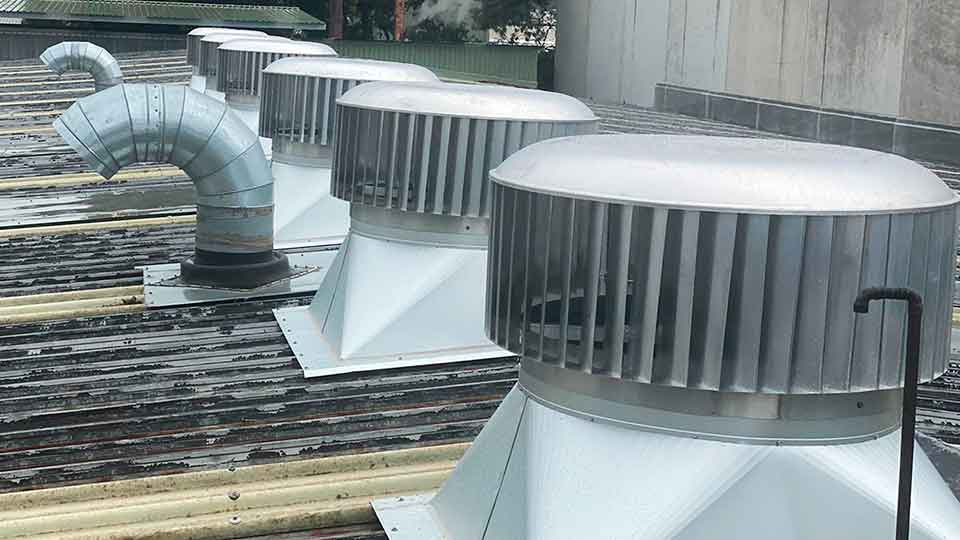The Longevity of Commercial Roof Vents: Factors and Maintenance
Introduction
Commercial roof vents play a vital role in maintaining a comfortable and functional environment within commercial buildings. They facilitate proper air circulation, control humidity levels, and help regulate temperature. However, like any other building component, commercial roof vents have a finite lifespan. Understanding the factors that influence their longevity and implementing regular maintenance can extend their service life and prevent costly replacements. In this article, we will explore the key factors affecting the lifespan of commercial roof vents and offer tips for effective maintenance.
Factors Influencing Commercial Roof Vent Lifespan
- Material Quality:
The choice of materials for commercial roof vents significantly impacts their lifespan. Common materials used for roof vents include galvanized steel, aluminum, and plastic. High-quality materials are more resistant to corrosion and weathering. Galvanized steel, for instance, is known for its durability and resistance to rust, making it a popular choice for commercial roof vents. Investing in vents made from superior materials can ensure a longer lifespan.
- Environmental Conditions:
The environmental conditions to which commercial roof vents are exposed can have a substantial impact on their longevity. Areas with harsh weather conditions, such as heavy rain, snow, extreme temperatures, and high humidity, can accelerate wear and tear on roof vents. Coastal locations may experience saltwater exposure, which can also contribute to corrosion. Regular inspections and maintenance are crucial in such environments to catch and address issues early.
- Installation Quality:
Proper installation is key to the longevity of commercial roof vents. When vents are not installed correctly, they can be prone to leaks and damage. Roofing professionals should ensure that vents are securely fastened and properly sealed to prevent water infiltration. A poorly installed vent is more likely to develop problems over time, shortening its lifespan.
- Vent Design and Type:
The design and type of commercial roof vent can affect its lifespan. There are various vent styles, including ridge vents, turbine vents, box vents, and powered vents, each with its own advantages and disadvantages. Some designs may be more prone to damage or wear, while others may offer better resistance to environmental factors. Choosing the right type of vent for the specific needs of the building and location can help maximize their lifespan.
- Maintenance and Cleaning:
Regular maintenance and cleaning are essential to extend the lifespan of commercial roof vents. Debris accumulation, such as leaves, dirt, and sticks, can obstruct vents and reduce their efficiency. This obstruction can lead to moisture buildup, which can accelerate deterioration. Scheduled cleaning and inspections can prevent these issues and catch any damage or wear early, allowing for timely repairs.
Tips for Maintaining Commercial Roof Vents
- Inspection Schedule:
Implementing a routine inspection schedule is crucial for ensuring the longevity of commercial roof vents. Regularly check for signs of damage, corrosion, or debris accumulation. Inspections should be performed at least twice a year, ideally in the spring and fall, to address any issues before they worsen.
- Clean Debris:
Keep vents free of debris by cleaning them regularly. Remove leaves, sticks, and any other obstructions that may hinder airflow. This simple task can prevent moisture buildup and extend the life of the vents.
- Address Leaks Promptly:
If you notice any signs of leaks or water damage around your commercial roof vents, take immediate action. Ignoring leaks can lead to more extensive damage and costly repairs. Addressing leaks promptly can prevent further deterioration and prolong the vents’ lifespan.
- Seal Gaps and Cracks:
Inspect the seals and flashing around your commercial roof vents. Over time, these materials can degrade or crack, allowing water to infiltrate. Reapply sealant or replace damaged flashing to maintain a watertight seal.
- Professional Maintenance:
Consider hiring a professional roofing contractor for regular maintenance and inspections. These experts can identify and address issues that may go unnoticed by untrained personnel. Professional maintenance can extend the lifespan of your roof vents and the overall roofing system.
Conclusion
Commercial roof vents are essential components of commercial buildings, contributing to ventilation and temperature control. To maximize their lifespan, it’s crucial to consider material quality, environmental conditions, installation, vent design, and maintenance. Regular inspections, cleaning, and prompt repairs can prevent premature vent replacement and save on long-term maintenance costs. By understanding the factors influencing commercial roof vent lifespan and implementing effective maintenance practices, building owners and managers can ensure a comfortable and efficient indoor environment for years to come.


